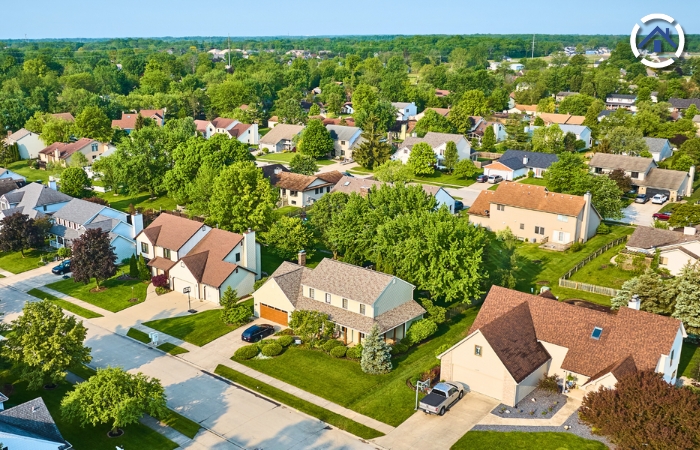
Choosing the right color for your roof isn't just about aesthetics; it affects more than how your home appears from the outside—it can also impact how comfortable you are inside. Whether you're thinking about going with darker or lighter shingles, each choice has its own pros and cons.
In this blog, we'll discuss the important things to consider when picking out the best roof color. We'll show you how it can make a big difference in making your home more energy-efficient and comfortable overall.
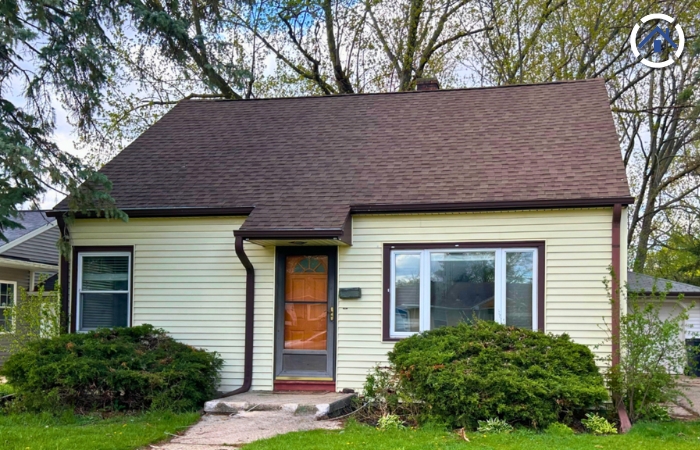
Dark-colored shingles offer several benefits, particularly in colder climates with harsh winters. These shingles, often found in shades of black, dark brown, or deep gray, are adept at absorbing sunlight, converting it into heat energy that can naturally warm the home during the winter months.
Dark-Colored Shingles for Energy Efficiency:
In regions characterized by cold temperatures and limited sunlight, like certain parts of Wisconsin, dark shingles offer distinct advantages. These shingles are particularly effective at capturing and retaining warmth, making them beneficial for homeowners seeking to reduce heating costs during chilly winters. Unlike light-colored shingles that reflect sunlight, dark shingles absorb solar energy, converting it into heat that can help maintain comfortable indoor temperatures even in colder climates with reduced sunlight.
Moreover, the heat absorbed by dark shingles serves a practical purpose in winter weather conditions. It aids in melting snow and ice more rapidly, preventing the accumulation of heavy snow loads on the roof. This not only safeguards the roof's structural integrity but also minimizes the risk of damage or collapse due to the weight of accumulated snow.
By facilitating quicker snowmelt, dark shingles contribute to safer and more manageable winter maintenance for homeowners, reducing the need for manual snow removal or potential roof repairs.
How Do Dark-Colored Shingles Absorb Light?
Dark shingles harness the power of solar energy through their rich pigmentation. When sunlight interacts with these shingles, their dark color enables them to absorb a significant portion of the solar radiation. This absorbed sunlight transforms into heat energy, warming the shingles and the underlying roofing structure. Through a process known as conduction, the heated shingles then transfer this warmth to the interior of the home.
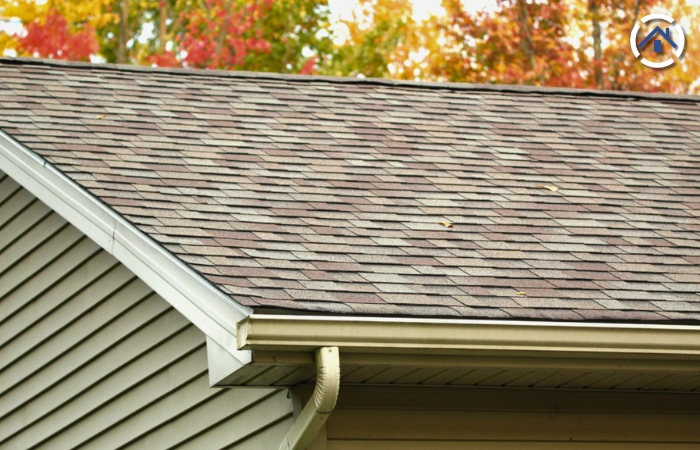
Light-colored shingles offer several advantages, particularly in warmer climates where excessive heat can be a concern. These shingles, often in white, beige, or light gray hues, are specifically designed to reflect sunlight rather than absorb it, helping to keep the home cooler during the hot summer months.
Light-Colored Shingles for Energy Efficiency:
Opting for light-colored shingles for your roof enhances your home's aesthetic appeal and significantly improves energy efficiency, particularly in warmer climates. By reflecting sunlight away from the roof surface, these shingles help prevent solar heat absorption, keeping the underlying structure cooler. This translates into tangible benefits for homeowners: increased comfort levels, noticeable energy consumption reductions, and consequent utility bill savings.
Light-colored shingles effectively minimize the need for constant air conditioning during scorching summers by deflecting a substantial portion of solar radiation. This decreased reliance on cooling systems enhances comfort and contributes to the overall sustainability of the environment by reducing carbon emissions associated with energy production. As a result, light-colored shingles have emerged as a popular eco-friendly roofing solution in regions characterized by hot weather and intense solar exposure.
How Do Light-Colored Shingles Reflect Sunlight?
Light-colored shingles reflect sunlight primarily due to their high albedo, which measures how much solar energy a surface reflects. These shingles have surfaces designed for high reflectivity. When sunlight hits them, a significant portion is bounced off the surface instead of being absorbed due to the materials used and their smooth texture, akin to how a mirror reflects light.
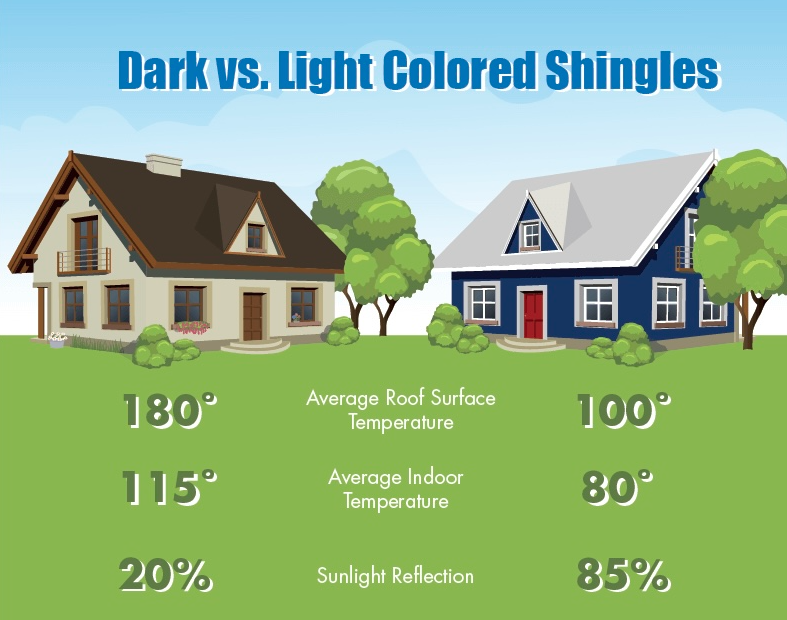
1. Climate and Regional Factors:
When selecting the best roof color for your home, consider your climate and regional factors to maximize energy efficiency and comfort. Factors such as average temperature, sunlight exposure, and prevailing weather conditions should all influence your decision.
In warmer climates, lighter-colored roofs reflect sunlight, helping to keep your home cooler and reducing the need for excessive air conditioning. Conversely, darker-colored roofs absorb sunlight in colder climates, providing additional warmth during winter and potentially reducing heating costs.
2. Type of Roofing Material: Different roofing materials have varying properties that can affect energy efficiency, durability, and aesthetic appeal. For example, asphalt shingles, metal roofing, and clay tiles each have unique characteristics that may influence how they interact with sunlight and heat.
The color of your roof should complement the material's inherent properties to achieve optimal performance. For instance, some roofing materials may be better suited for reflecting sunlight, while others may excel at absorbing it. Therefore, the choice of roofing material should be considered alongside the desired color to ensure compatibility and maximize both benefits.
3. Level of Insulation: Sufficient insulation is critical in maintaining comfortable indoor temperatures, minimizing energy usage, and enhancing overall home comfort. The amount of insulation installed beneath your roof directly impacts how effectively your home holds onto or repels heat.
Consequently, it is vital to evaluate your insulation requirements and ensure they're adequately addressed before deciding on a roof color. By doing so, you can optimize the performance of your insulation and make informed choices about the most suitable roof color for your home's energy efficiency and comfort.
4. Adherence to Local Building Codes: Local building codes and regulations dictate specific requirements and standards for roofing systems to ensure structural integrity, safety, and compliance with environmental standards. These codes may include provisions related to roof color, material selection, and installation methods.
Therefore, you must consult local building authorities or professionals familiar with regional building codes before deciding about your roof. By adhering to local regulations, you can avoid potential fines, penalties, or safety hazards associated with non-compliant roofing materials or colors.
When choosing the ideal or best roof color to suit Wisconsin's specific environmental conditions, it's essential to consider the state's local climate nuances, such as temperature fluctuations, humidity levels, and prevailing weather patterns.
In Wisconsin's cold climate and long winters, dark-colored roofs are advantageous for trapping and retaining heat, helping to lower heating expenses. Contrarily, in the state's warmer regions or during hot summers, light-colored roofs are preferred for their ability to reflect sunlight, keeping indoor temperatures cooler and reducing the need for excessive air conditioning, thus cutting down on cooling costs.
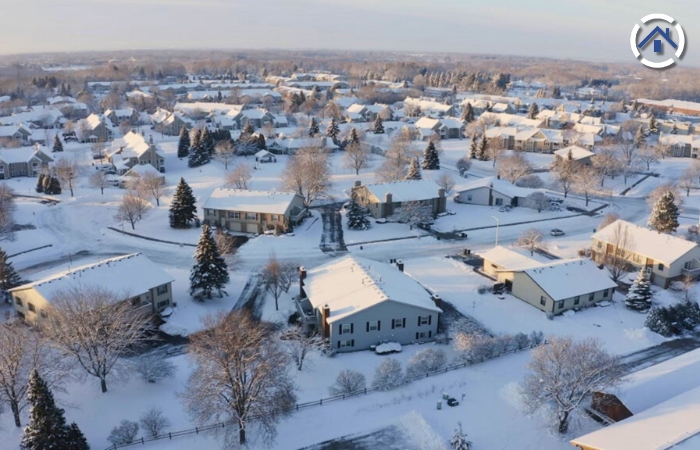
To summarize, selecting the best roof color for your home is about more than just appearance; it's about optimizing your home's energy efficiency and ensuring your comfort throughout the year. Whether you opt for dark-colored shingles to harness solar energy for warmth during chilly winters or light-colored ones to reflect sunlight and keep your home cool in the summer heat, each choice carries its own set of benefits and considerations.
To make the best decision for your home, it's crucial to weigh factors such as climate, regional conditions, roofing material, insulation levels, and adherence to local building codes. Consulting with experts or professionals knowledgeable about these factors can provide invaluable insights and help you make a more informed choice. By considering these recommendations, you can ensure that your roof not only looks great but also performs optimally, maximizing energy efficiency and enhancing overall comfort levels in your home.